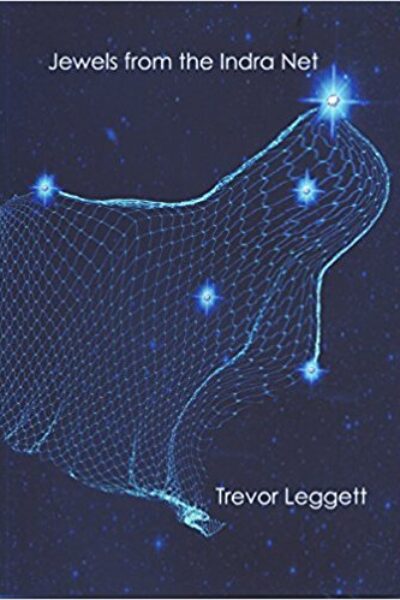Jewels from the Indra Net

Book description
This is Trevor Leggett’s last book which was published in June 2014 to mark his Centenary. The title of the book refers to the fabled net of the god Indra of which the strands have a jewel of truth at each juncture. The jewels reflect each other so that each one has deeper meanings in it. The pieces on Eastern methods of inner training and realisation from a variety of traditions are not intended as theoretical instruction or entertainment. They all point to actual practice in life.
Paperback published by Youth Support Publications
ISBN 9781870717250
Price £5.00
Book extract
Known to Whom it is Unknown ‘If you think you know it well, then little indeed you know.’ (Kena Upanishad) With these words, the teacher gives the mind of a pupil a shake. The words are a thrust at self-satisfaction. The pupil has an intellectual grasp of Brahman, Truth, and some experience of it. But he thinks that this shining intellectual experience is the True Knowledge that gives liberation from confinement in body-mind individuality. The teacher gives a thrust: “If you think that this is knowing it, you know almost nothing about it.” Badly shaken, he leaves the group of disciples and goes to a solitary place. There he sits down in the deep meditation which leads to samadhi, and takes the needle-point of his ‘I’ consciousness beyond associations and memories. In the Zen phrase, the bottom falls out of the bucket. He comes back, and the teacher looks at him; the glance saying “Say something of it.” He replies: “I do not think I know it. Still, it is not that I do not know it, I do know it. He among us here who knows what it means to say ‘Still, I do know it’, he knows it.” The Upanishad sums up: “Known to him to whom it is unknown; unknown to him to whom it is known.” We can find in daily life a hint of these seeming riddles. When someone sits down to learn to type, the teacher often covers the keyboard so that he cannot see the fingers. In front of him is displayed a map of it and he has to identify the keys under his fingers with the various letters on the map. It is slow, because he does not know where they are. He has to consult the map and then feel for them. He does not know, and he cannot type. After some weeks, he has memorized the plan, and his fingers are getting familiar with the keys. He knows: if asked where the J key is, he answers at once, “Middle row on the right, under the index finger.” He knows, but he cannot really type as an expert understands it. After some years, that expert can type with perfect accuracy at high speeds; with a computer keyboard it can be almost as fast as a pianist. But if someone suddenly asks this same expert, “Where is the J key?” often he cannot answer at once. He has to type mentally “Joe”, and only then can he answer. He does not know. And yet … he types perfectly at high speeds. He more than knows, in a sense, it is part of him. He does not know; still, he does know.